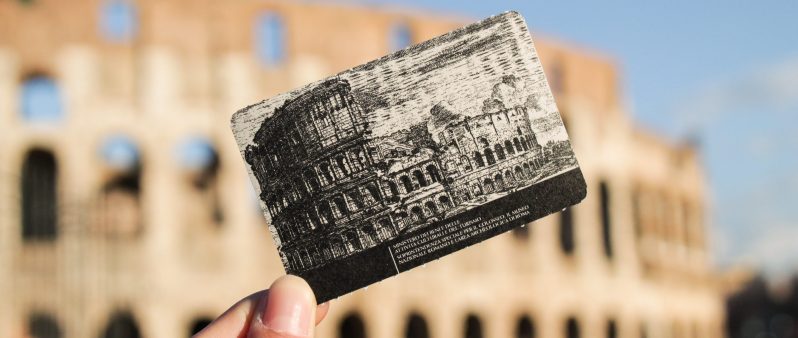
Let’s face it, most postcards are not sent to those we wish were with us, but rather to those we have left, not always unhappily, at home. Given my long and strong addiction to vintage postcards, scouting them out, collecting them, sending them, and now downloading them, it is necessary to leave a large pool of one’s acquaintances at work and at home in order to justify serious postcard shopping and mailing while abroad.
My constant need for more postcards to send and more stamps to go with them makes for an increasingly challenging need to speak in the local tongue better, to understand the taboos. Even in English. As a teenager in Montréal at the Olympics in 1976, I was roundly corrected by an English-speaking Canadian postal clerk who, when I said I wanted 10 postcard stamps for America, replied that I was in America – i.e. Canada — and to be more precise in the future.
I’ve always found approaching any booth like those at the post office off-putting, and as it is often one’s first solo mission using a new language (passport control, post office, border checkpoint), it scares me that much more so. ‘Is it Timbres Étrangères? or is that a Strange Stamp?’ Better to just say ‘pour dix cartes postales vers l’amerique’—surely Canada’s pride won’t interfere in Paris. Do I add “par avion” to prevent the cards from arriving home long after I do?
This is complicated in France by the need to inflate oneself to at least twice one’s full height and to convert what would be a question in the US into a declaration in France. “Vous-avez dix timbres pour des cartes postales aux États-Unies.’ (A distinct falling tone on États-Unies, since if there is any hint of a question in your question, any upturn in your tone, you will have entered the land of “oh, mais non, monsieur,” from which you won’t recover unless truly stout of heart.
God forbid you have to ask for a series of postcard stamps for different destinations ——say you are in Italy and are writing to the US, but also to a friend in Italy and one in London; the conversation necessary with the postal clerk will be prodigious requiring some advance study on your part as well as a map and good pantomime skills as a backup. One place the current adage that ‘everyone speaks English’ is not true is among members of the bureaucracies of Western Europe.
My friend Mark Lanoue gave me this set of turn-of-the-century Postcard Books more than a decade ago. Each book is around 100 years old and still in mint condition. The individual cards (12 or more per book) have never seen the light of day and are tightly bound in with tiny pieces of tissue paper separating each one. As a result, each is a tiny work of art.
And what is any postcard you send or bring home in lieu of pictures you take yourself, but a tiny collectible work of art? The photographs—characteristic townscape or mind-blowing landscape, or the reproduction of the art you see in context on foreign museum walls.
One thing that’s true of so many postcards is that the exact scene included in my Ricordi di Firenze postcard album of the Ponte Vecchio is repeated over and over in later years. First as a plain photo on a sepia background, then a quietly colorized version of that, then a garish color version, and finally a new shot with a modern camera.
Postcards can be a window into the soul of a place even if you are not visiting but studying the language or doing research on the location’s history. Google.com (click on images) has a vast collection of vintage postcards to cull through, and many are old enough to be out of copyright. EBay and sites like the indispensable cardcow.com provide more options.
If you are interested in getting a feel for another culture and navigating in a different language, the individual country-by-country versions of Google can be great. Google.fr and Google.it are easy enough to remember, but for a list of the Google local search engines worldwide, go to https://en.wikipedia.org/wiki/List_of_Google_domains.
And here is a starter list of the terms for postcards in 10 languages –the next most important word to include in your search is “vintage.” And I leave it to you to puzzle out in each country which word on the Google Nav bar means “images”. You’ll want that as well.

To write this, I went hunting in our apartment for some vintage postcards from my grandmother and aunt, who traveled every summer when I was growing up, or some from my parents, who were always on the road, or some of the howlers I sent back from trips in my teens, but no luck. What I did find serves as a perfect example of the importance even the smallest, cheapest piece of mail played at the turn of the penultimate century:
A photograph of my grandfather and his sisters, taken by their mother, in Cambridge, Mass – 1904 – made into a vintage postcard, with a brief note to their Aunt and Uncle staying on the rue Scribe in Paris.(The tiny white space on the front of the card was all it was legal to use until 1907 when the post office allowed people to write on the address side of a card.)
Tracking the cancelled stamps, the card entered the system in Boston, went to New York, to Paris, and then, courtesy of Thomas Cook, was re-routed to Cairo and then Assouan in Egypt. All for a 2¢ stamp. As I have the physical card, I have to assume it made it successfully and was brought home by Aunt Suzie.
In the age of insta-postcards received digitally on the same day they are taken, things have changed somewhat: mostly the necessity for any vocabulary-expanding encounters with foreign Postal workers.
I suspect encounters about the absence/presence and connectivity or lack thereof of WiFi along our travels may just provide room for equally challenging foreign language-improving moments trying to communicate with the local technical service corps.
I can’t wait.
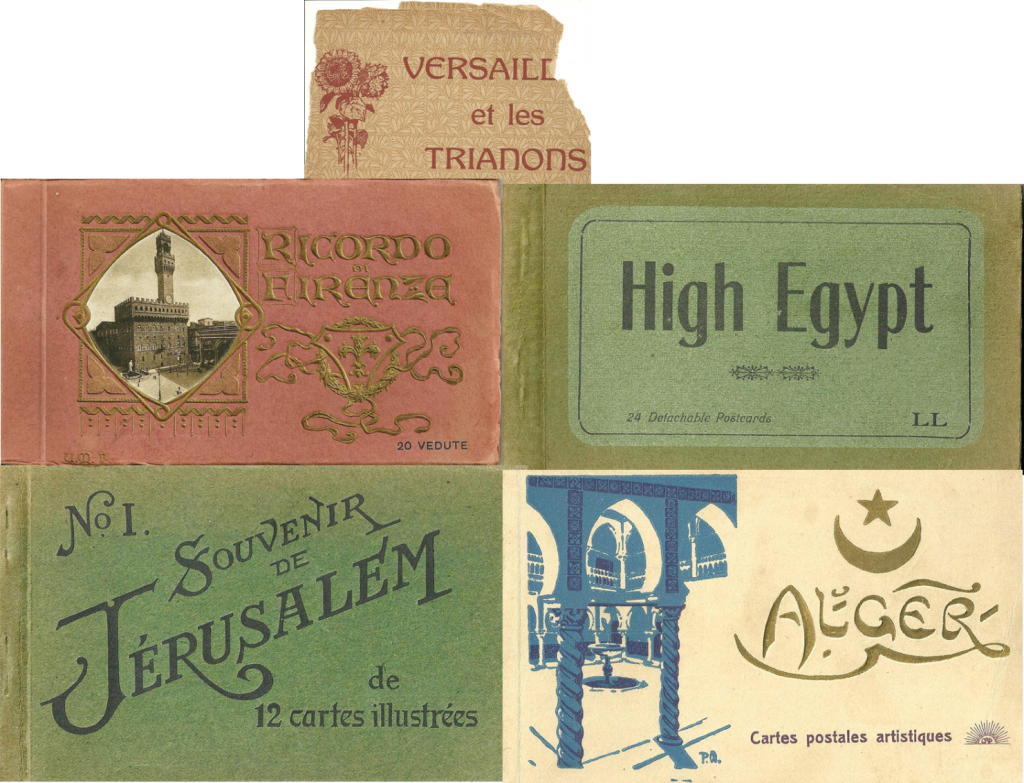
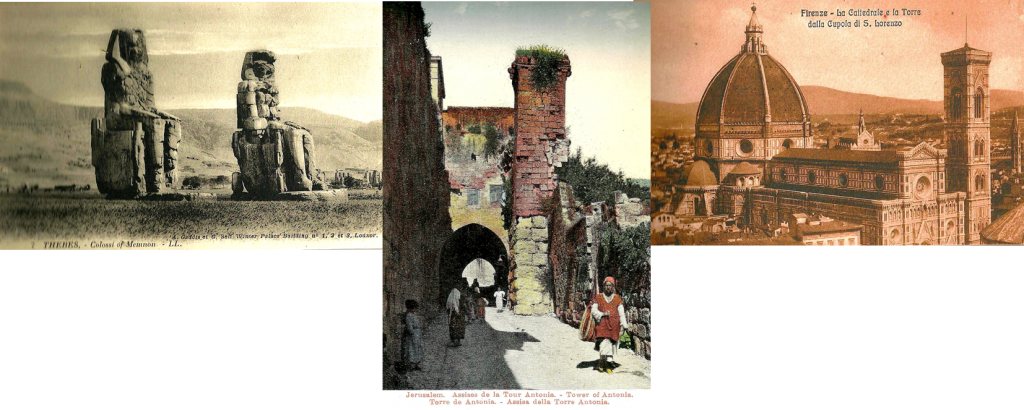


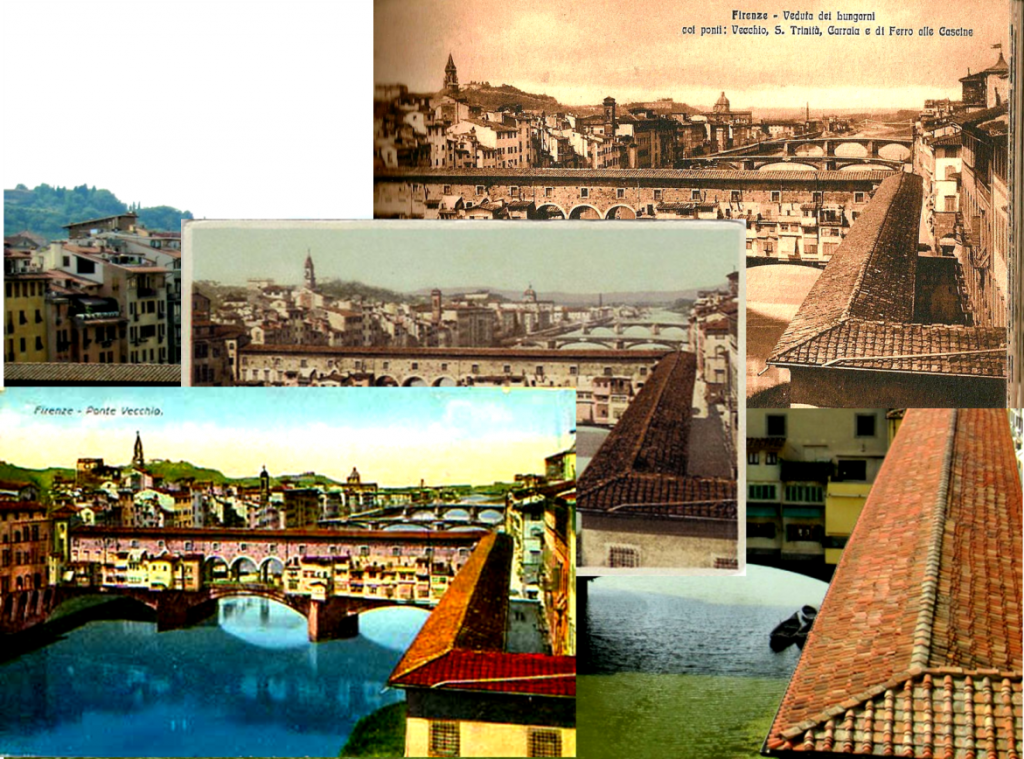
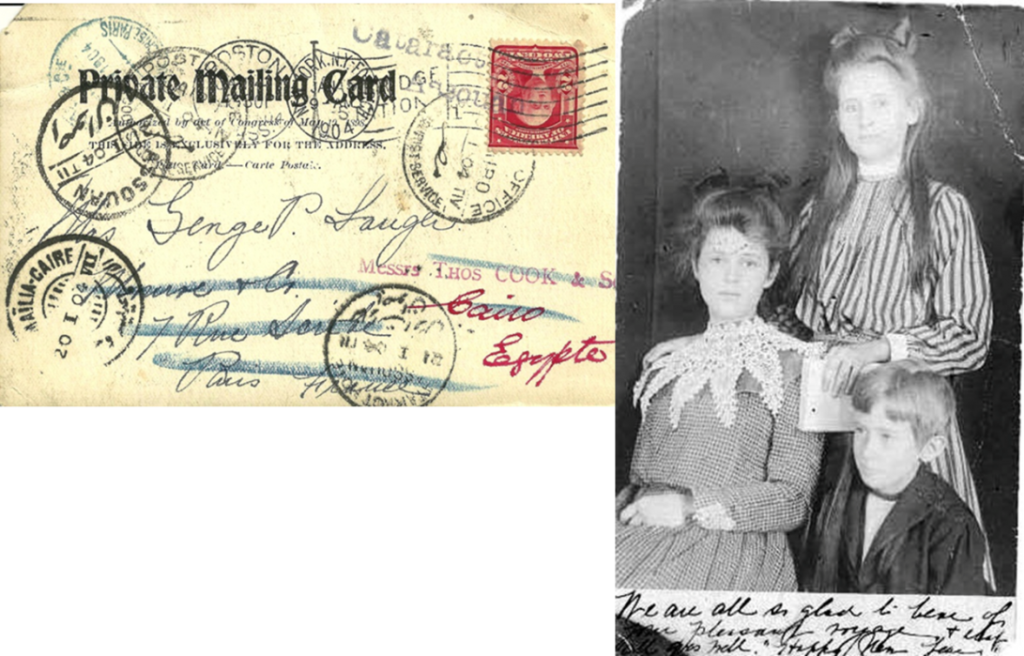

No Comments for "Having a Great Time, Wish You Were Here …"